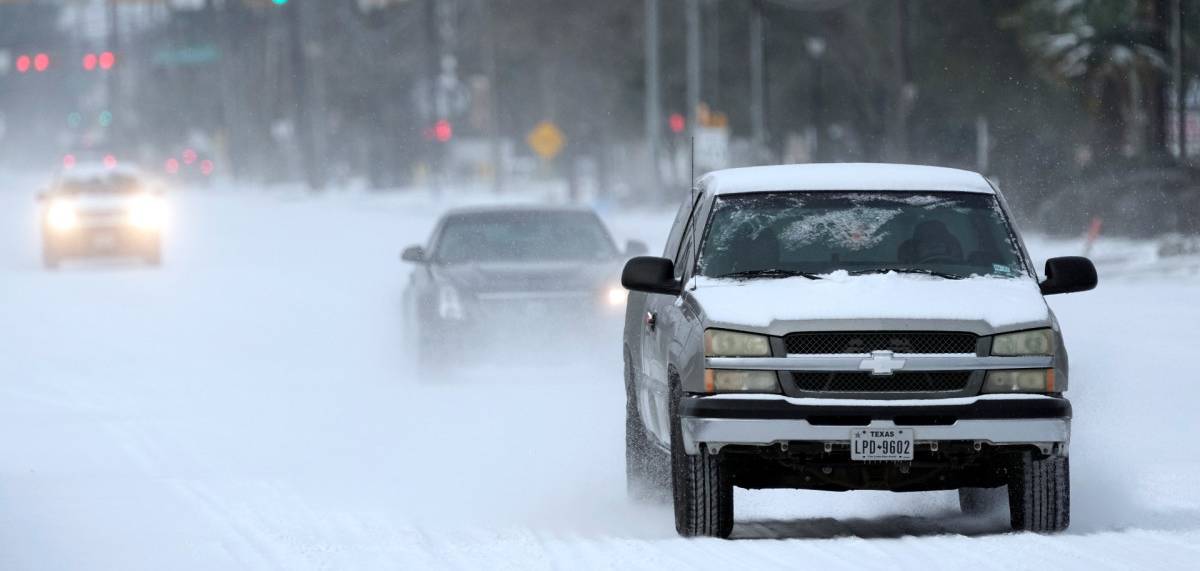
In February 2021, in the midst of rapid warming global temperatures , a cold snap exceptionally severe hit large parts of North America, from Canada to northern Mexico. It left 10 million people without electricity. The impact has been particularly severe in Texas , which alone had more than 125 deaths associated with the event.
In the US, it was the month of February the coldest for over 30 years Cold Wave has become the most expensive winter storm enregisyrée ever in the country.
The freezing temperatures were associated with a plunge south into the jet stream , a band of strong winds about eight miles above the surface of the Earth associated with the boundary between the colder air and warmer air.
The jet stream flows from west to east, but this is not the only direction in which atmospheric waves can travel - they can also rise and fall over great distances, which can connect weather and climate. in one region, like the Arctic, with regions elsewhere, like Texas.
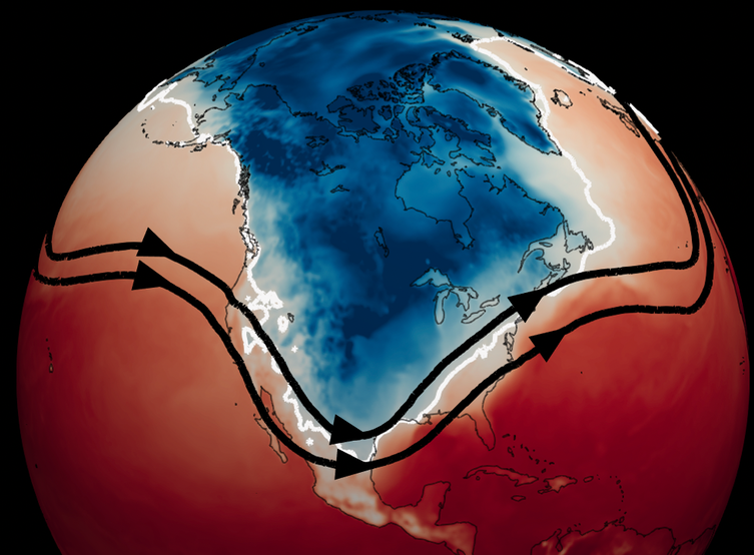
Surface temperatures on February 15, 2021 at 6 a.m. in Texas. The black lines show the jet stream and the white line indicates the extent of freezing temperatures. Mathew Barlow / University of Massachusetts Lowell, CC BY-ND
When you throw a rock into a pond , you see waves - waves - spread away from the initial disturbance. While ripples in a pond are a different type of wave from troughs that can be observed in the jet stream, both types of waves can transmit the same effects of a disturbance to distant areas. butterfly Effect.
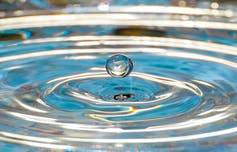
Water ripples in response to disturbance Forance / Shutterstock.
In this case, atmospheric waves transmitted the influence of climate change in the Arctic to parts of North America and Asia.
In a study published September 2, 2021 in the journal Science , we show how this happened and how, contrary to what one would expect, events such as the cold wave in February may actually become more likely with global warming.
What happens in the Arctic does not stay there
The Arctic is warming faster than any other region, at a rate more than twice the global average.
This causes great changes in the region's climate, including the melting of sea ice and, in late autumn, increased snow cover over Siberia.
Ice and snow provide an insulating layer and are highly reflective, so their changes greatly alter the amount of energy and moisture moving between the Earth's surface and the atmosphere. The atmosphere is sensitive to changes in energy and humidity, so substantial changes “kick” the atmosphere which results in ascending waves moving away from the area.
These waves move upwards in the stratosphere and disrupt the stratospheric polar vortex , another tape winds fast that rotates further around the pole in the middle stratosphere, approximately 18 miles from above. In response, the vortex weakens and stretches.
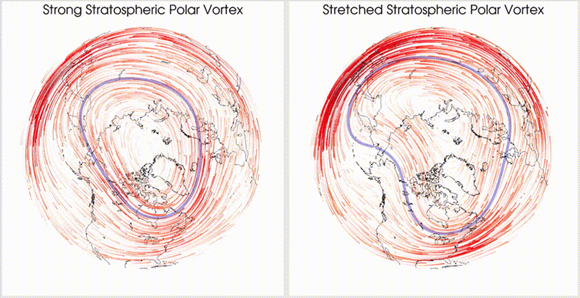
Two circulation patterns of the stratospheric polar vortex: strong (left) and stretched (right). Blue curves indicate the approximate edge of the vortex; shown about 9.3 miles, or 15 kilometers, above the surface.
Not only can the stratospheric vortex be altered by waves, but the vortex can also change the way waves move, as waves are influenced by the wind and temperature fields they pass through, and the vortex helps determine these winds and temperatures. What differentiates a vortex stretch event from larger vortex disturbances is that the upward moving waves are reflected back to the surface, where they can influence low-level weather conditions.
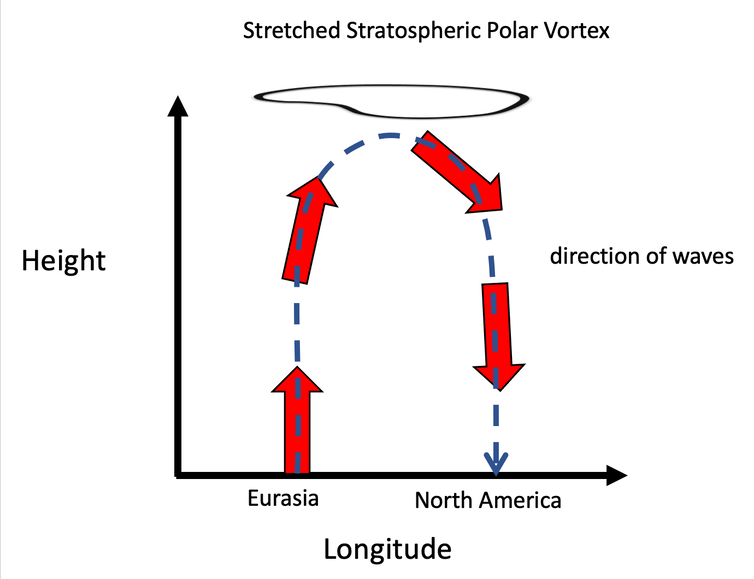
A diagram shows wave activity reflecting off the stretched stratospheric polar vortex.
As these descending waves build up at lower elevations over North America, they create a southerly plunge into the jet stream, bringing cold air further south. than usual. Thus, the upward and downward movement of atmospheric waves over long distances - such as ripples moving across a pond - can connect the Arctic with other regions.
Test the cause and effect
Two different approaches have been taken to identify and examine these relationships.
First, the researchers used machine learning, a technique in which a computer essentially trained to group similar events from historical data. They then analyzed the stretched vortex events to show that for these cases there was a typical sequence of events: first changes in surface temperature in the Arctic, then changes in the stratospheric polar vortex, followed by cold waves in North America and Asia - with vertically moving waves providing the connections over a period of a few months. The surface temperature changes identified in the Arctic are similar to those associated with melting sea ice and increasing Siberian snow cover from arctic climate change.
Subsequently, a computer model of the atmosphere was used to assess cause and effect and directly test how the atmosphere reacts to these Arctic changes. The model was found to reproduce the observed sequence of events.
Analysis of machine learning observations and computer modeling experiments provide two independent data sources to support a pathway of influence - from arctic climate change at the surface to changes in stratospheric winds, and and finally the return to cold waves in North America and parts of Asia.
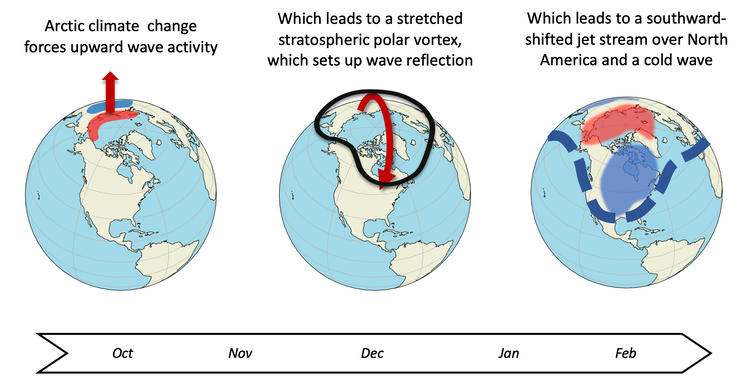
A timeline points the way between climate change in the Arctic and cold temperatures in North America. Red and blue in the third panel indicate differences from average conditions. Mathew Barlow / University of Massachusetts Lowell, CC BY-ND
Implications of these esults
The research reinforces two crucial lessons from climate change: First, change doesn't have to happen in your garden to have a big effect on you. Second, the unintended consequences can be quite serious.
In this case, the great changes in the Arctic are not just a local concern - they are also having far-reaching repercussions in North America and parts of Asia. And these impacts are not always what people expect. The findings highlight another reason to rapidly reduce greenhouse gas emissions that are causing global warming and, at the same time, the need to develop better strategies to deal with extreme, hot weather events. and cold.
Posted on 2021-09-08 17:27








Comments